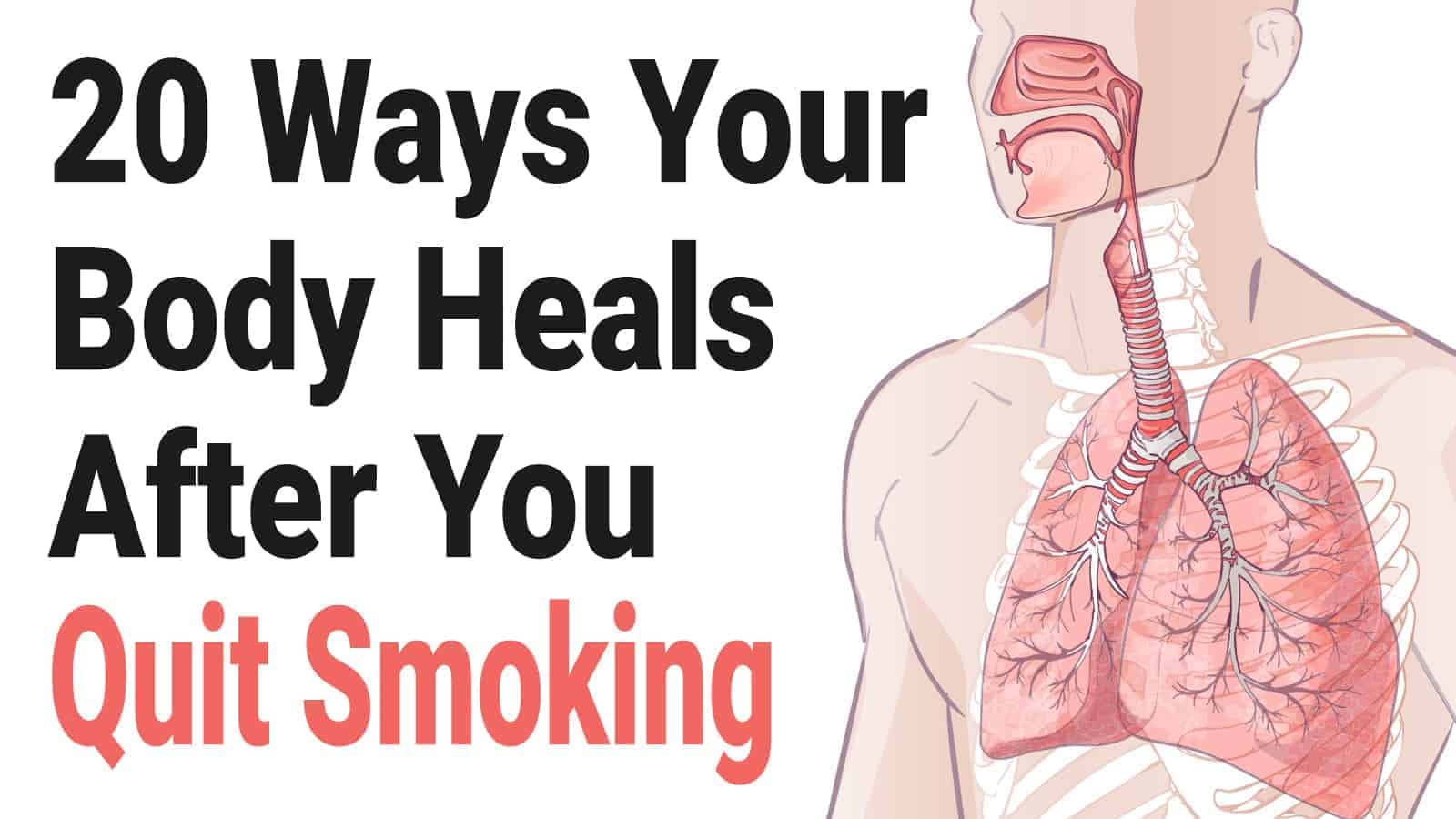Smoking addiction is severe and difficult to overcome. Though the world has enjoyed a universal decrease in smoking rates in the past half-century, there are still around 40 million people in America who take part in cigarette smoking.
Many smokers desire nothing more than to kick the habit; most do want to leave behind the harmful addiction for good. A minimum of 50% of all adult smokers have attempted to quit in the last year alone, but of those trying, half will relapse within a fortnight.
Many people have attempted to find ways to reduce the severity of their cravings, with the knowledge of the high relapse rates. Some may indulge in harmful distractions, and not many have access to health resources to help them in their journey.
Thankfully, science may have just found a way to help control these strong urges to smoke – and it’s probably simpler and stranger than you may think.
New Research Reveals An Unusual Way To Decrease Cigarette Cravings Naturally
A study entitled “Pleasant Olfactory Cues Can Reduce Cigarette Craving,” published in the Journal of Abnormal Psychology, and performed by the American Psychological Association, has revealed that positive smells and scents effectively reduce cravings for cigarettes. Here’s what you need to know.
a) Participants
The study used a variety of smokers aged between 18 years old and 55 years old, all of whom were not currently attempting to quit. They also were not using other forms of nicotine delivery, such as vapes or gum.
In total, there were 232 participants, who were all asked to bring a lighter and a pack of their chosen cigarettes. They were told not to smoke for eight hours before arriving for the experiment.
b) Study Methods
Each participant was asked to smell several different scents and odors and rate them. These smells were mostly known to be pleasant, such as:
- Vanilla
- Chocolate
- Peppermint
- Apple
- Lemon
Participants also smelled and rated unpleasant smells – such as chemicals – and a “blank” or neutral odor; they did the same for tobacco from the cigarette brand they preferred.
Next, participants lit one of their cigarettes and held it without smoking it for 10 seconds. They would then be asked to rate their cravings or urges to smoke, ranking it from a scale of one up to a hundred. They would then put out the cigarette and place it down in a waiting ashtray.
Participants were then given a container of scent to sniff. They would be given either one of these three options:
- Their chosen tobacco smell
- The smell they rated best
- A blank case with no smell
They would then be told to continue smelling the contents of the container. Over the next five minutes, they continued to smell. At one-minute intervals, they would be asked to rate their smoking craving again.
c) Results
All participants rated their desire to smoke after smelling a container of any kind to have dropped after some time. The average ratings among them were:
- After lighting the original cigarette: 82.13
- After smelling a blank case: 70.93
- After smelling their chosen tobacco: 70.43
- After smelling their favorite pleasant scent: 62.83
d) Conclusions
The dropping of all ratings of cravings is likely due to the act of snuffing out and removing the initial cigarette, thus “saving” the participants from temptation. However, the reason behind the better results from pleasant smells is hypothesized to be because they provide distractions, typically by jogging a subconscious memory associated with the smells.
All in all, researchers are in agreement that pleasant smells could be a great way to control cravings in smoking quitters. Still, more research must be conducted before conclusions can be drawn about its stand-alone effectiveness.
Types Of Cravings
Let’s talk about the two types of cravings that a quitter would experience.
The first kind is a physical craving, also known as withdrawal. After a few days, your body will begin to experience withdrawal symptoms due to the lack of nicotine in a body that has become used to it. Your brain and body need to be completely rewired, and they will work on doing so – but in that time, you will experience symptoms like:
- Irritability and a lack of positive thinking
- Stomach tightness
- Throat tightness
- Headaches
- Tension, stress, or anxiety
- Cravings
The second kind is a psychological craving, also known as a trigger. These cravings occur due to certain situations and events that drive you to want a cigarette. Over your years as a smoker, you automatically reach for a cig every time certain events happen – and now your body is conditioned to it. This can include:
- Alcohol consumption
- Eating
- Driving
- Partying
- After bad days
- Stressful events
Other Methods To Decrease Cigarette Cravings
There are plenty of helpful methods that have also been somewhat proven to aid in the remedying of strong cravings. While method we’ve previously discussed is likely most effective, using that alongside these methods can help make craving prevention and control easier. Here are some of the most vouched-for methods.
a) Drink Water
Dehydration can cause you to feel anxious, and anxiety is a very common smoking trigger. So the next time you want to grab a cig, chug a large glass of water instead.
In general, the body does need a lot of water – eight glasses daily is the recommended minimum. Keeping yourself well-hydrated will help you kick the habit more easily as it helps to manage your metabolism, especially when used hand-in-hand with other methods.
b) Learn Mindfulness
Breathing is a natural, automatic process – but breathing correctly for best results is often ignored. Learning to use mindfulness and taking some quiet time to breathe slowly can help you to deal with cravings.
When you feel cravings begin, sit down in a quiet area and focus on your breathing. Inhale slowly and exhale in a mindful manner. This will provide a meditative calmness that will help you feel refreshed and more in control.
c) Take A Walk (or Do Any Exercise)
When you sit still, your mind focuses on your cravings and the emotions attached to them. You’ll become restless and, usually, won’t be able to stop yourself from reaching for a pack.
So get up and take a five- or ten-minute walk. Breathe using your stomach (or diaphragm) instead of your chest and clear your mind. This can help reduce physical cravings, or at least most of their symptoms.
Exercise, in general, can also be helpful in this respect, as it will reduce overall cravings and their symptoms. It will also boost positive thinking and improve your mood. You need a very short bout of physical activity to achieve this, such as:
- A quick jog
- Pushups
- A short walk
- Do squats
- Walking up and down stairs
- Yoga poses
- Running in one spot
Even less demanding physical activity can work, like:
- Needlework
- Photography
- Journaling
- Woodwork
d) Eat Something Healthy
When you’re hungry, your blood glucose levels begin to decrease. This can cause the desire to smoke to rise very quickly. For some people, differentiating sugar and tobacco cravings is near impossible.
However, you can’t just grab any snack option you see – you have to pick them well. Go for healthy options that help stabilize your blood sugar, such as:
- Yogurt
- Saltine crackers with peanut butter
- Fruit
Avoid snacks that might cause more blood glucose problems, such as ones that consist of refined carbohydrates, saturated fat, or high-fructose corn syrup, like:
- Baked products
- Candy
- Chips and junk food
Chewing, in general, can also be very helpful in giving your mouth something to be occupied with other than a cigarette. If this is the case with you, opt for things that are satisfying to chew, like:
- Nuts
- Chewing gum
- Celery sticks
- Seeds
- Raw carrots
e) Understand Your Triggers
Take note of when you tend to feel cravings the most strongly. These will typically be habitual situations or ones involving stress or intense emotions. For example:
- At bars or parties with other smokers
- After drinking coffee
- After eating certain types of foods
- When you’re stressed out with work
- When you wind up in an argument
Try your best not to put yourself in situations that will make you instinctively reach for cigarettes. If you have to be in them, devise a plan to distract yourself or replace the harmful behavior with something better.
f) Remind Yourself Why You’re Quitting
It can be helpful to make a list of all the reasons you aim to quit to put your cravings into perspective. It will remind you why you decided to quit and what good will come of seeing that through to the end.
This will also help you if you tend to rationalize. You may say “I’ll just have one cigarette,” but we all know this is a slippery slope. Remind yourself of what you risk by lighting up even one cigarette. Remind yourself why it’s so crucial that you don’t deviate from sobriety.
Plus, doing this helps you take note of what leads to relapses. You may be able to analyze mistakes and slip-ups and avoid them. You can also write down goals and visions of the positive sides, such as:
- Lowered blood pressure
- Better oxygen levels
- Decreased disease risk
- Better sense of taste and smell
- Stronger, healthier lungs
- Feeling better and healthier
- Not exposing loved ones to dangerous secondhand smoke
- Saving money
g) Seek Support
There is no shame in needing help. If you struggle with cravings, it may be time to find those who can help you. You can:
- Join a support group for addicts
- Contact a friend, family member, loved one, or another person you trust (spend time with them, vent to them, ask for advice, etc.)
- Join an online support group or program
- Read up and research about how others kicked the habit; many quitters run useful blogs
- Call a support hotline for quitters
Conclusion
Kicking the smoking addiction is an extremely difficult task. That’s why so much research is being conducted into how we can better aid quitters and recovering addicts. This study, along with some others, shows a lot of promise and suggests that we are one step closer to more effective methods.
If you’re working on quitting smoking, first of all, congratulations! Secondly, do try out these tips and tricks we’ve shared here, ranging from pleasant scents to increasing physical activity. Although their effects may seem small, that little decrease in craving may be all you need to get yourself out of the wrong headspace.
















 Community
Community

